157 books about Tales and 7
start with G
157 books about Tales and 7
157 books about Tales
7 start with G start with G
7 start with G start with G
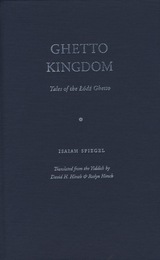
Ghetto Kingdom
Tales of the Lodz Ghetto
Isaiah Spiegel
Northwestern University Press, 1998
Isaiah Spiegel was an inmate of the Lodz Ghetto from its inception in 1940 until its liquidation in 1944. While there, he wrote short stories depicting Jewish life in the ghetto and managed to hide them before he was deported to Auschwitz. After being freed, he returned to Lodz to retrieve and publish his stories.
The stories examine the relationship between inmates and their families, their friends, their Christian former neighbors, the German soldiers, and, ultimately, the world of hopelessness and desperation that surrounded them. In using his creative powers to transform the suffering and death of his people into stories that preserve their memory, Spiegel succeeds in affirming the humanity and dignity the Germans were so intent on destroying.
Originally published as Malchut geto (Malkhes geto) in Yiddish.
The stories examine the relationship between inmates and their families, their friends, their Christian former neighbors, the German soldiers, and, ultimately, the world of hopelessness and desperation that surrounded them. In using his creative powers to transform the suffering and death of his people into stories that preserve their memory, Spiegel succeeds in affirming the humanity and dignity the Germans were so intent on destroying.
Originally published as Malchut geto (Malkhes geto) in Yiddish.
[more]
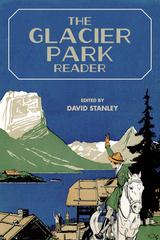
The Glacier Park Reader
David Stanley
University of Utah Press, 2017
The first and only anthology of key writings about Glacier National Park, this comprehensive collection ranges from Native American myths to early exploration narratives to contemporary journeys, from investigations of the park’s geology and biology to hair-raising encounters with wild animals, fires, and mountain peaks.
Soon after the park was established in 1910, visitors began to arrive, often with pen in hand. They included such well-known authors as mystery writer Mary Roberts Rinehart, historian Agnes C. Laut, fiction writer Dorothy Johnson, humorist Irvin S. Cobb, poet Vachel Lindsay, and artist Maynard Dixon—all featured in the book. Readers will encounter colorful characters who lived in and around the park in its early days, including railroad magnate and conservationist Louis Hill, renegade ranger and poacher Joe Cosley, bootlegger Josephine Doody, and old-time cowboy guide Jim Whilt. Blackfeet and Kalispel myths, politically charged descriptions by early explorers such as John Muir and George Bird Grinnell, and full-color reproductions of the illustrated letters of cowboy artist and Glacier resident Charles M. Russell are also included.
Copublished with the Glacier National Park Conservancy.
The Glacier National Park Conservancy preserves the Park for generations to come. Learn more about our work at www.glacier.org
Part of the National Park Reader series, edited by Lance Newman and David Stanley
Soon after the park was established in 1910, visitors began to arrive, often with pen in hand. They included such well-known authors as mystery writer Mary Roberts Rinehart, historian Agnes C. Laut, fiction writer Dorothy Johnson, humorist Irvin S. Cobb, poet Vachel Lindsay, and artist Maynard Dixon—all featured in the book. Readers will encounter colorful characters who lived in and around the park in its early days, including railroad magnate and conservationist Louis Hill, renegade ranger and poacher Joe Cosley, bootlegger Josephine Doody, and old-time cowboy guide Jim Whilt. Blackfeet and Kalispel myths, politically charged descriptions by early explorers such as John Muir and George Bird Grinnell, and full-color reproductions of the illustrated letters of cowboy artist and Glacier resident Charles M. Russell are also included.
Copublished with the Glacier National Park Conservancy.
The Glacier National Park Conservancy preserves the Park for generations to come. Learn more about our work at www.glacier.org
Part of the National Park Reader series, edited by Lance Newman and David Stanley
[more]
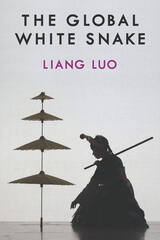
The Global White Snake
Liang Luo
University of Michigan Press, 2021
The Global White Snake examines the Chinese White Snake legends and their extensive, multidirectional travels within Asia and across the globe. Such travels across linguistic and cultural boundaries have generated distinctive traditions as the White Snake has been reinvented in the Chinese, Japanese, Korean, and English-speaking worlds, among others. Moreover, the inter-Asian voyages and global circulations of the White Snake legends have enabled them to become repositories of diverse and complex meanings for a great number of people, serving as reservoirs for polyphonic expressions ranging from the attempts to consolidate authoritarian power to the celebrations of minority rights and activism.
The Global White Snake uncovers how the White Snake legend often acts as an unsettling narrative of radical tolerance for hybrid sexualities, loving across traditional boundaries, subverting authority, and valuing the strange and the uncanny. A timely mediation and reflection on our contemporary moment of continued struggle for minority rights and social justice, The Global White Snake revives the radical anti-authoritarian spirit slithering under the tales of monsters and demons, love and lust, and reminds us of the power of the fantastic and the fabulous in inspiring and empowering personal and social transformations.
The Global White Snake uncovers how the White Snake legend often acts as an unsettling narrative of radical tolerance for hybrid sexualities, loving across traditional boundaries, subverting authority, and valuing the strange and the uncanny. A timely mediation and reflection on our contemporary moment of continued struggle for minority rights and social justice, The Global White Snake revives the radical anti-authoritarian spirit slithering under the tales of monsters and demons, love and lust, and reminds us of the power of the fantastic and the fabulous in inspiring and empowering personal and social transformations.
[more]
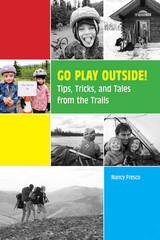
Go Play Outside!
Tips, Tricks, and Tales from the Trails
Nancy Fresco
University of Alaska Press, 2021
Having children doesn’t mean that you can’t enjoy every season in the great outdoors—even if you happen to live in the middle of Alaska. Whether you’re biking eighty miles into the heart of Denali National Park, cross-country skiing to a remote cabin, or merely enjoying the mud on the banks of the Chena River in downtown Fairbanks, fun for all ages abounds, with a little preparation and the right mindset. Using a deft mixture of storytelling and practical pointers, this guidebook offers advice and encouragement to families—those who live in Alaska, as well as those in less extreme climates and locales.
Organized by the age of the young adventures, from days-old infants to independent teens, each section invites readers to learn from the humorous real-life adventures and misadventures of the author, her husband, and their twin girls. Weaving in the kids’ advice in their own words, this guide covers challenges ranging from unexpected hailstorms to very-much-expected mosquitoes. Tips include everything from how to avoid moose, to how to get out in the rain, to the benefits of setting big kids free to explore. This family’s enthusiastic, joyful, and often hilarious tales offer the impetus and the tools to encourage new parents—or more experienced parents, or anyone who loves kids —to go play outside.
Organized by the age of the young adventures, from days-old infants to independent teens, each section invites readers to learn from the humorous real-life adventures and misadventures of the author, her husband, and their twin girls. Weaving in the kids’ advice in their own words, this guide covers challenges ranging from unexpected hailstorms to very-much-expected mosquitoes. Tips include everything from how to avoid moose, to how to get out in the rain, to the benefits of setting big kids free to explore. This family’s enthusiastic, joyful, and often hilarious tales offer the impetus and the tools to encourage new parents—or more experienced parents, or anyone who loves kids —to go play outside.
[more]
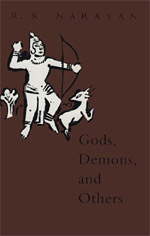
Gods, Demons, and Others
R. K. Narayan llustrated by R. K. Laxman
University of Chicago Press, 1993
Following in the footsteps of the storytellers of his native India, R. K. Narayan has produced his own versions of tales taken from the Ramayana and the Mahabarata. Carefully selecting those stories which include the strongest characters, and omitting the theological or social commentary that would have drawn out the telling, Narayan informs these fascinating myths with his urbane humor and graceful style.
"Mr. Narayan gives vitality and an original viewpoint to the most ancient of legends, lacing them with his own blend of satire, pertinent explanation and thoughtful commentary."—Santha Rama Rau, New York Times
"Narayan's narrative style is swift, firm, graceful, and lucid . . . thoroughly knowledgeable, skillful, entertaining. One could hardly hope for more."—Rosanne Klass, Times Literary Supplement
"Mr. Narayan gives vitality and an original viewpoint to the most ancient of legends, lacing them with his own blend of satire, pertinent explanation and thoughtful commentary."—Santha Rama Rau, New York Times
"Narayan's narrative style is swift, firm, graceful, and lucid . . . thoroughly knowledgeable, skillful, entertaining. One could hardly hope for more."—Rosanne Klass, Times Literary Supplement
[more]
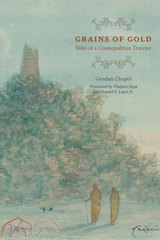
Grains of Gold
Tales of a Cosmopolitan Traveler
Gendun Chopel
University of Chicago Press, 2013
In 1941, philosopher and poet Gendun Chopel (1903–51) sent a large manuscript by ship, train, and yak across mountains and deserts to his homeland in the northeastern corner of Tibet. He would follow it five years later, returning to his native land after twelve years in India and Sri Lanka. But he did not receive the welcome he imagined: he was arrested by the government of the regent of the young Dalai Lama on trumped-up charges of treason. He emerged from prison three years later a broken man and died soon after.
Gendun Chopel was a prolific writer during his short life. Yet he considered that manuscript, which he titled Grains of Gold, to be his life’s work, one to delight his compatriots with tales of an ancient Indian and Tibetan past, while alerting them to the wonders and dangers of the strikingly modern land abutting Tibet’s southern border, the British colony of India. Now available for the first time in English, Grains of Gold is a unique compendium of South Asian and Tibetan culture that combines travelogue, drawings, history, and ethnography. Gendun Chopel describes the world he discovered in South Asia, from the ruins of the sacred sites of Buddhism to the Sanskrit classics he learned to read in the original. He is also sharply, often humorously critical of the Tibetan love of the fantastic, bursting one myth after another and finding fault with the accounts of earlier Tibetan pilgrims. Exploring a wide range of cultures and religions central to the history of the region, Gendun Chopel is eager to describe all the new knowledge he gathered in his travels to his Buddhist audience in Tibet.
At once the account of the experiences of a tragic figure in Tibetan history and the work of an extraordinary scholar, Grains of Gold is an accessible, compelling work animated by a sense of discovery of both a distant past and a strange present.
[more]
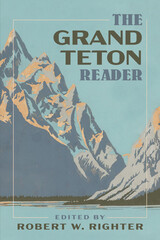
The Grand Teton Reader
Robert W. Righter
University of Utah Press, 2021
Grand Teton National Park draws more than three million visitors annually in search of wildlife, outdoor adventure, solitude, and inspiration. This collection of writings showcases the park’s natural and human histories through stories of drama and beauty, tragedy and triumph.
Editor Robert Righter has selected thirty-five contributors whose work takes readers from the Tetons’ geological origins to the time of Euro-American encroachment and the park’s politically tumultuous creation. Selections range from Laine Thom’s Shoshone legend of the Snake River and Owen Wister’s essay “Great God! I’ve Just Killed a Bear,” to Grace Gallatin Seton-Thompson’s humorous yet fearful account of crossing the Snake River, and William Owen’s first attempt to climb the Grand Teton. Conservationists, naturalists, and environmentalists are also represented: Terry Tempest Williams chronicles her multiyear encounter with her “Range of Memory,” and Olaus and Mardy Murie recount the difficulties of “park-making” in an often-hostile human environment.
Anyone seeking a deeper understanding of the park’s wild beauty and controversial past will want to read these stories by people who lived it.
Editor Robert Righter has selected thirty-five contributors whose work takes readers from the Tetons’ geological origins to the time of Euro-American encroachment and the park’s politically tumultuous creation. Selections range from Laine Thom’s Shoshone legend of the Snake River and Owen Wister’s essay “Great God! I’ve Just Killed a Bear,” to Grace Gallatin Seton-Thompson’s humorous yet fearful account of crossing the Snake River, and William Owen’s first attempt to climb the Grand Teton. Conservationists, naturalists, and environmentalists are also represented: Terry Tempest Williams chronicles her multiyear encounter with her “Range of Memory,” and Olaus and Mardy Murie recount the difficulties of “park-making” in an often-hostile human environment.
Anyone seeking a deeper understanding of the park’s wild beauty and controversial past will want to read these stories by people who lived it.
[more]
READERS
Browse our collection.
PUBLISHERS
See BiblioVault's publisher services.
STUDENT SERVICES
Files for college accessibility offices.
UChicago Accessibility Resources
home | accessibility | search | about | contact us
BiblioVault ® 2001 - 2024
The University of Chicago Press









